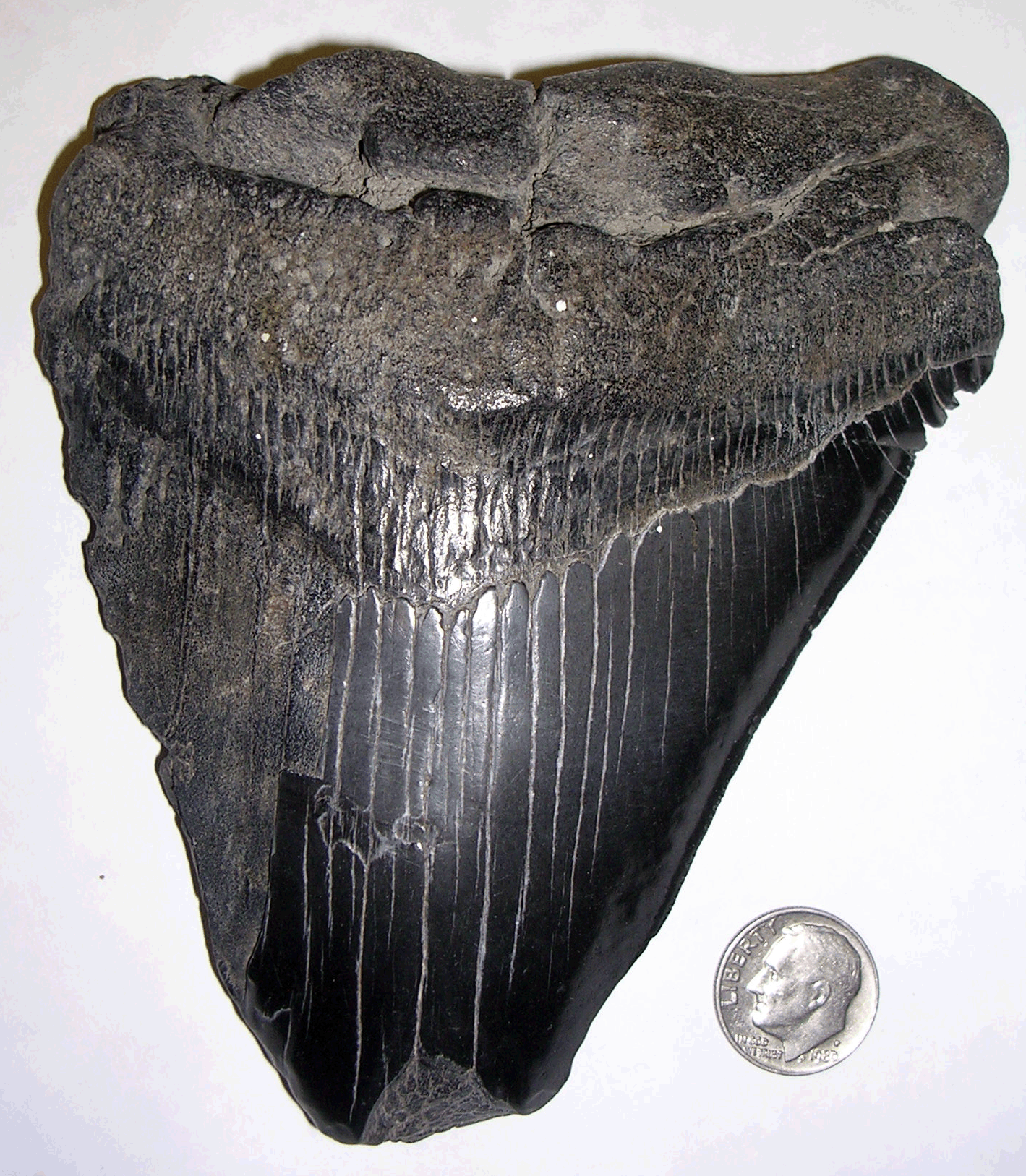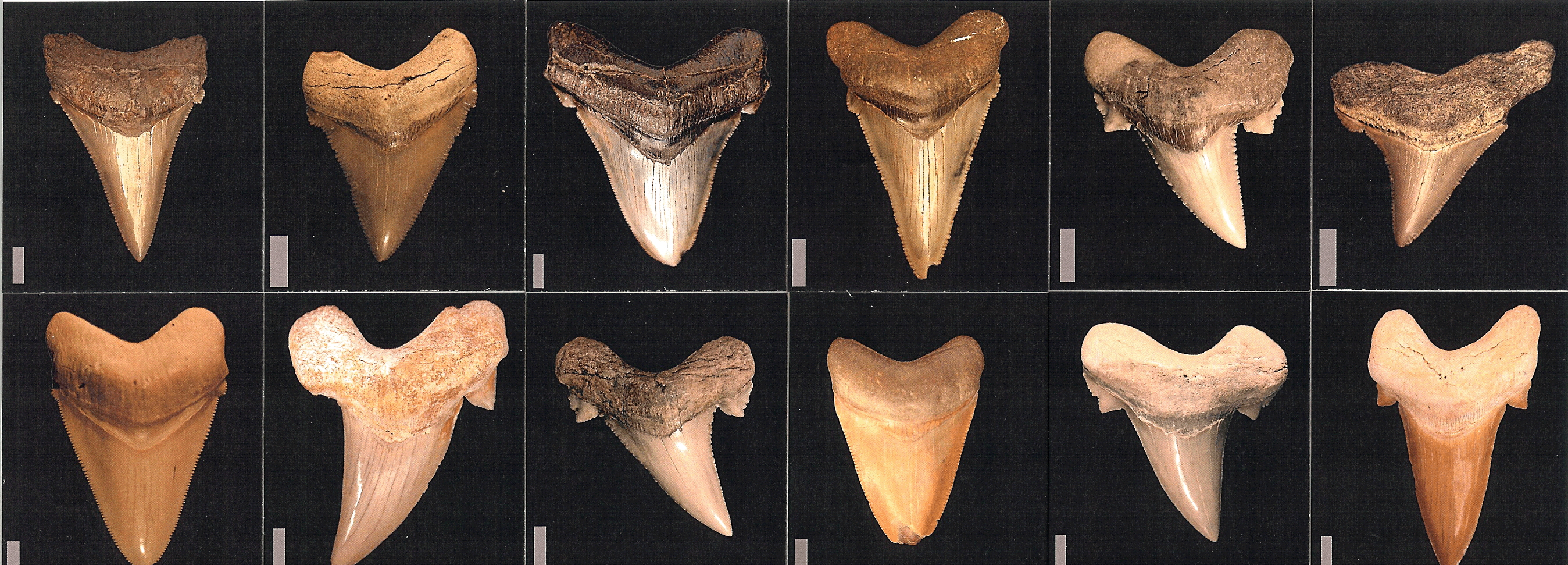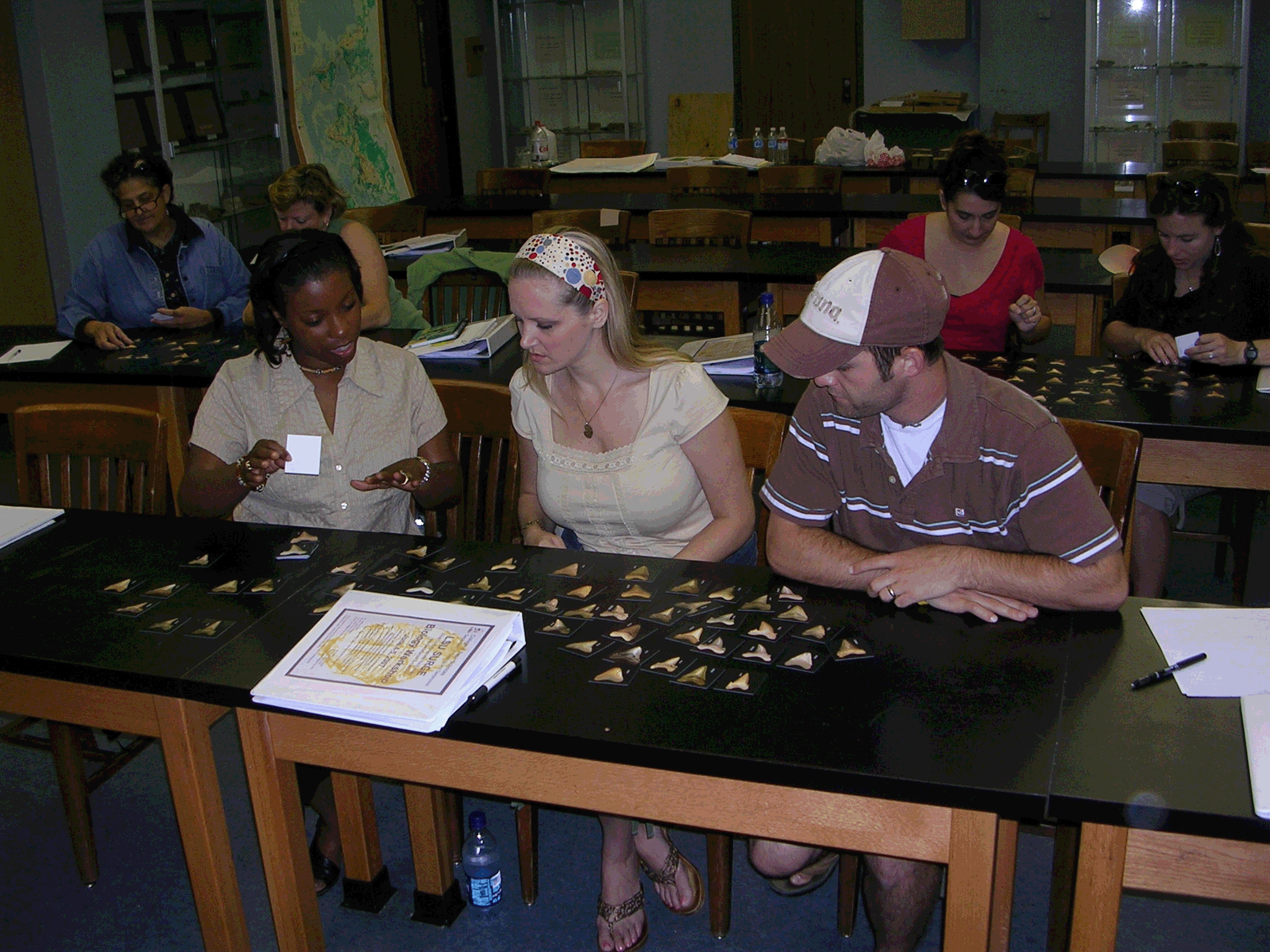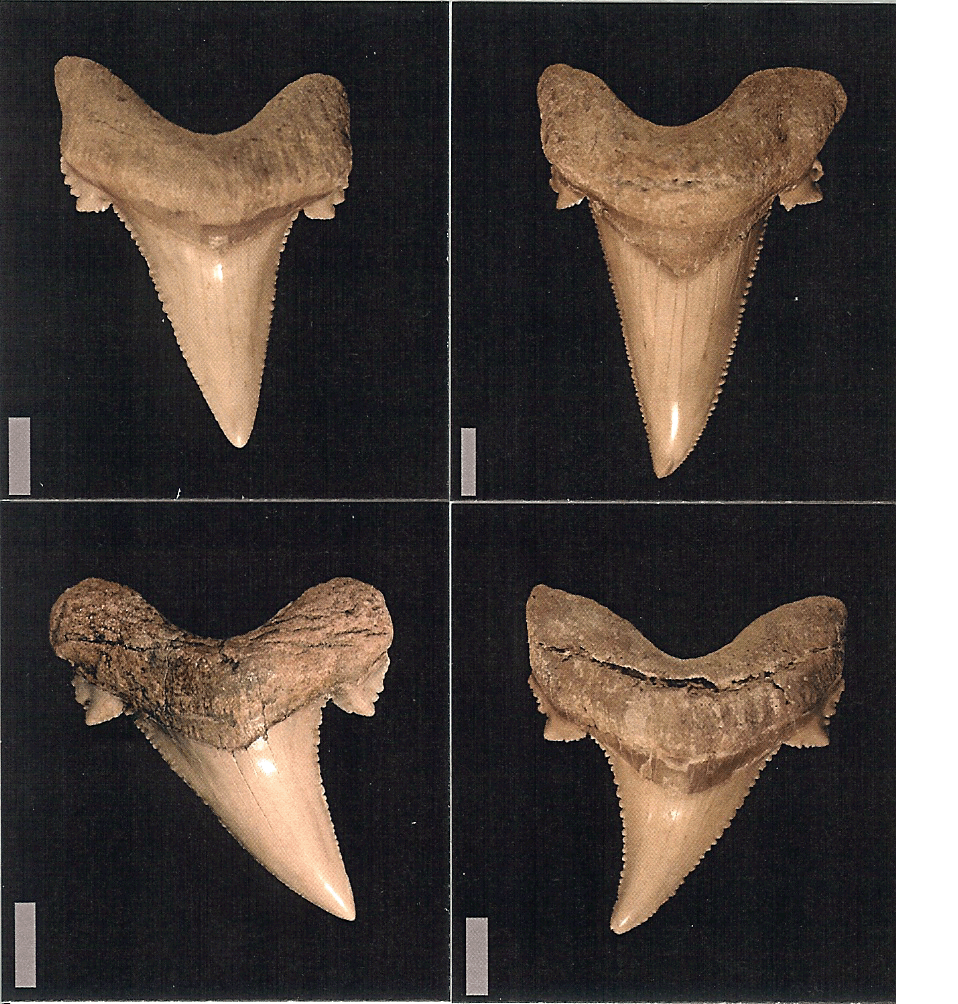leading to Carcharocles megalodon, the largest predatory shark in history with
teeth up to 17 cm long (Figure 7). Megatoothed shark teeth have an excellent
fossil record and show continuous transitions in morphology from the Eocene
to Pliocene (Figure 8).

fig 7
aksuaticus (Early Eocene to Middle Eocene), C. auriculatus (Middle Eocene to Early Oligocene), C. angustidens
(Early Oligocene to Late Oligocene), C. chubutensis (Late Oligocene to Early Miocene), C. megalodon (Early Miocene
to Pliocene)



